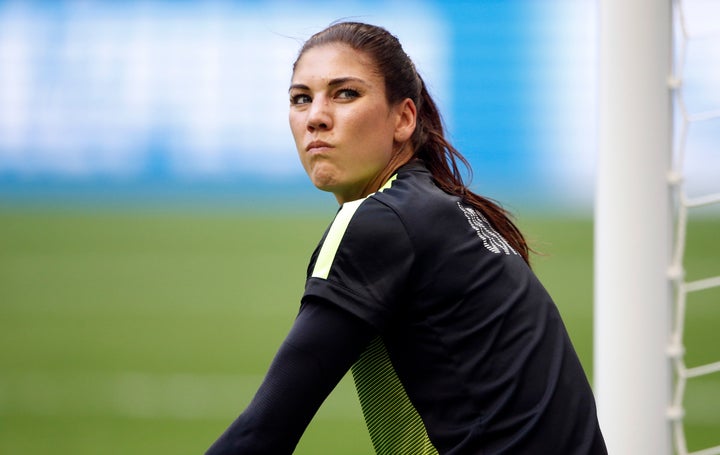
Yes, in the U.S. women make less money than men on average. For every dollar a man makes, a woman makes 79 cents, according to census data.
But even in light of that big pay gap, what’s happening with the U.S. Women’s National Soccer Team stands out as particularly egregious.
Women soccer players are making between 40 and 72 percent of what the male players are making, said Jeffrey Kessler, the lawyer representing the women’s team in a pay discrimination case filed Thursday against the U.S. Soccer Federation.
“This is worse than the overall nationwide gap," Kessler told The Huffington Post. It would be like if you took all the employees of a company, and split them up into a women's office and a men's office and then paid each section completely differently, based entirely on gender, he said.
The huge difference in pay appears to be due entirely to blatant discrimination. Female soccer players quite simply are being paid less for the same work. Indeed, considering the huge success the team has had -- they’re actually being paid less for superior work.
That’s not quite what’s going on in the broader economy, where the situation is not as simple as unequal pay for equal work: The gap between what women and men earn can be explained by things other than discrimination.
More than half of the gender pay gap in the U.S. can be attributed to the fact that men and women work in different jobs and industries, a recent research report from jobs site Glassdoor demonstrated.
Of course, the reasons women and men choose different kinds of jobs and industries has a lot to do with sexism and the different kinds of expectations society has of girls (to be caretakers, or are bad at math) and boys (to be breadwinners, or are leaders), but this is distinct from overt discrimination.
More men work in higher-paying industries while women dominate lower-wage industries. Eighty-four percent of chief executives in the U.S. are men; Ninety-five percent of hairdressers are women, according to labor department data from 2015. Even within industries, women tend to dominate the lower paying jobs -- in tech, for example, women tend to gravitate toward marketing while men dominate the technical roles.
Another 14 percent of the gender pay gap is due to differences in education and experience between men and women, the Glassdoor report found. More women take time out of the labor force to care for kids or family: That hits them in the pocketbook.
Even when men and women have the same jobs -- the women still wind up making less, because they choose work that is less time intensive and offers more flexibility for care-taking, separate research from Harvard economist Claudia Goldin has found. So for example, men become extremely high-paid lawyers at big law firms while women maybe take in-house legal positions at companies that require fewer hours, and pay slightly less.
Once you take these things into account, plus other variables like age and location, the difference between what men and women make is “just” 5.4 cents, according to Glassdoor’s analysis -- an amount that lines up with previous studies of the pay gap.
That remaining difference is probably due to a mix of workplace bias against women and probably women of color (Glassdoor did not consider race in its analysis). It’s a small but stubborn percentage, that economists have a difficult time explaining.
Companies these days are under a lot of pressure to come clean about the way they pay men and women. But so far, the businesses who are talking about their pay gaps look nowhere near as terrible as U.S. soccer.
Last year, cloud computing company Salesforce spent $3 million adjusting pay between men and women. Last month, Amazon -- responding to a request from activists -- announced it paid women 99.9 percent of what men made. Apple announced that it pays men more than women -- when taking into account stock-based compensation.
What’s interesting though is that those firms are lagging far behind soccer in another measure of equity -- none employ equal numbers of women and men. They all have far more male leadership and more men in highly coveted technical roles.
In soccer, women have unquestionably asserted their dominance. And yet by every measure women soccer players are paid less than men, according to the detailed complaint filed Thursday.
The pay set-up is so skewed in the men’s favor that in 2015 the men’s team earned $9 million for simply making it to the round of 16 in their World Cup attempt. That same year, the women, WON the World Cup and pulled in $2 million.
Even on the small things, women soccer players get shafted: Women get $50 to cover daily expenses when they’re on tour in the U.S., while men get $62.50.
The U.S. Soccer Federation said in a statement early Thursday that it was disappointed by the complaint, but later in the day seemed to ease up a bit, and suggest it was willing to do more for its women players.
"We think very highly of the women's national team and we want to compensate them fairly, and we'll sit down and work through that with them when all of this settles down," Sunil Gulati, the president of the organization, said Thursday night.
